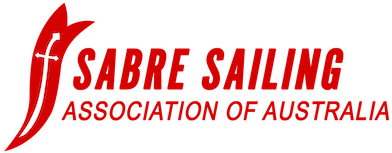Forum Replies Created
-
AuthorPosts
-
melvinjenkin
ParticipantMost masts used currently and in the past are extruded by Capral including the mast supplied by Bob Keeley
and Binks.
Older Capral masts are heavier and stiffer due to thicker wall probably a result of die wear as this mast has been around a long time and is used in many classes. They can really only be identified by weight.The IECON mast is extruded in New Zealand and is an intermediate weight between old Capral and New “Keeley” masts It can be identified by an extruded ridge on the outside of the web.
The new “Keeley” mast is the lightest with thinnest wall thickness. Strength is maintained by use of a newly developed alloy.
IECON Boats also produces masts to the weight requirements of the user and these masts are anodised black
All these masts are available from IECON Boats in any configuration from raw section to fully rigged and anything between at very competitive prices. Matching high tensile booms and all fittings are also available
BTW A fully rigged IECON mast came second in the S.A Nationals
melvinjenkin
ParticipantHi
The boat with number 447 has a measurement certificate so its unlikely that this is the number for your hull as it is a requirement that the number is permanently embossed in the keel.
The boat number 569 does not have a measurement certificate so its possible that this is the number of your hull.
CheersJohn Dixon
National Measurer
Sabre Sailing Association Of Australia
T 03 9729 1188
M 0402 008808melvinjenkin
ParticipantThe position of the chainplates is define as “centrally above the chain plate blocks” (step 41 building notes)
The chainplate blocks are fixed “hard against the forward face of the centrecase bunkhead” (step 28 building notes)
The dimensions of the chainplate blocks is 150x48x18.
The position of the centre of the chainplates is therefore 24mm (half of 48) forward of the forward face of the centrecase bunkhead.There will need to be extensive consultation with Members and States before there is a National vote on any major changes. This is not a quick process and may take a year or more.
John Dixon
National Measurermelvinjenkin
ParticipantI manufacture Sabre trolleys and have made enough to think that I have the best design and construction method. Anyone is welcome to come a have a look at how they are made or I can send photos.
melvinjenkin
ParticipantThe intention of the recent rule amendmants proposed by the Victorian committee was to remove the restriction on fittings used and to remove the vang measurement point on the boom. The removal of the restriction on fittings was passed but unfortunately the removal of the measurement of the attachment point on the boom was not. This means that there is some confusion about what point is measured if alternative attaching methods are use. We will be proposing another change to either remove the measurement point or to define it so that any attachment method can be used without risk of it failing to comply with rules.
melvinjenkin
ParticipantThe best part for this application is RWO, R4870 vang plate and R4861 angle key. The reason that I say this is the fitting has 4 attachment holes which are located on the widest part of the boom resulting in total shear load. The more important reason is that these parts are readily available and relatively cheap.
melvinjenkin
ParticipantI have a listing of what I usually fit to a boat. As Andrew said a lot of the selection is a personal preference but I think I have been very selective and looked at a lot of boats to see what they are using so its probably a fairly objective selection. Note however it is based on functional efficiency and weight with cost being a very secondary consideration. Please contact me if you require this list.
[email protected]
W 03 9729 1188
M 0402 008808
Fax 03 9729 0198
2/15 Kearney St
Bayswater VIC 3153melvinjenkin
Participantor you could save youself a lot of time and effort sourcing stainless steel tube, rod and free? welding by buying a towel rail from me. The towel rail I make has larger diameter rod which does not bend with high vang loadings of Sabres, like to old mirror fitting, that I suspect Binks is selling. My towel rail also includes glass filled nylon slider, clevis pins/retainers and pulley all for only $50 with free postage for October and November. This towel rail has been in use for over 7 years by top end boats and has zero failure rate in very high loading useage.
Note: The towel rail should be attached to boom with bolts and nyloc nuts. Pop rivets will fail eventually. -
AuthorPosts
